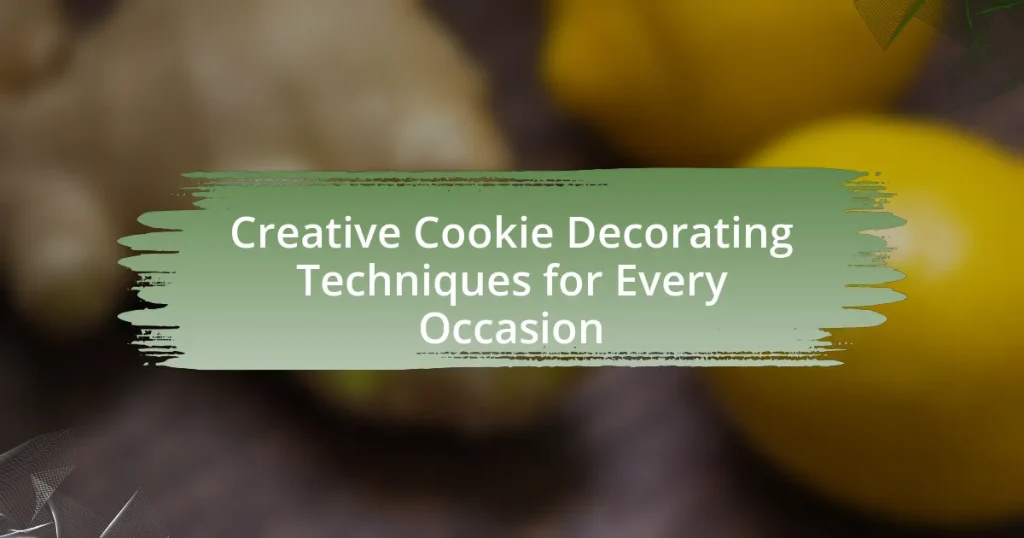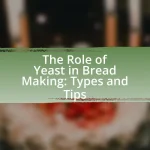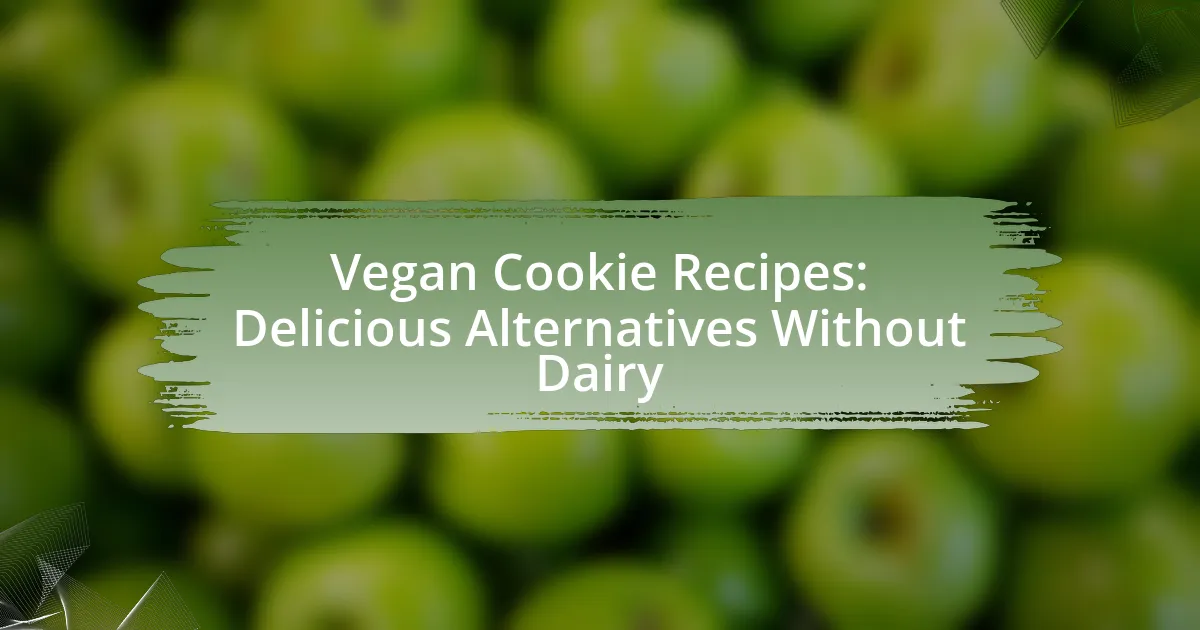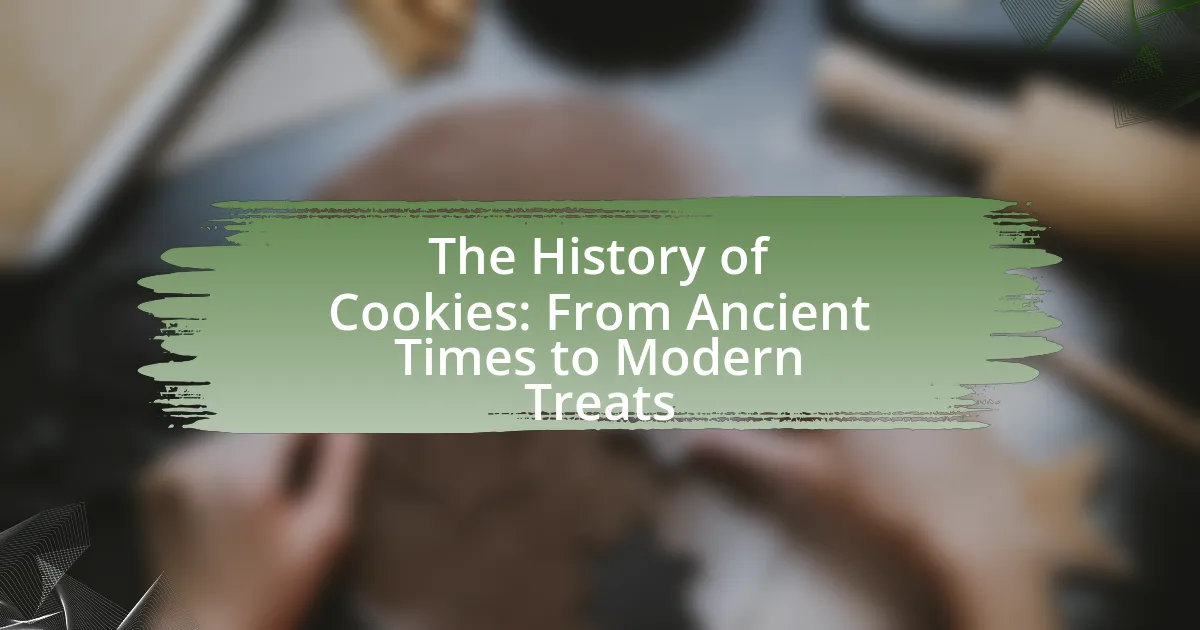Creative cookie decorating techniques encompass methods such as royal icing, fondant application, and airbrushing, each contributing to the visual appeal of cookies. These techniques enhance special occasions by allowing for personalized designs that reflect event themes, making cookies memorable and engaging for guests. Various events, including birthdays, weddings, and holidays, benefit from tailored cookie designs that align with their specific themes. Essential tools for cookie decorating include piping bags, food coloring, and various types of icing, with royal icing and fondant being the most effective for achieving intricate designs. The article provides insights into popular decorating techniques, tips for beginners, and strategies for troubleshooting common mistakes, ensuring decorators can create visually stunning cookies for any celebration.
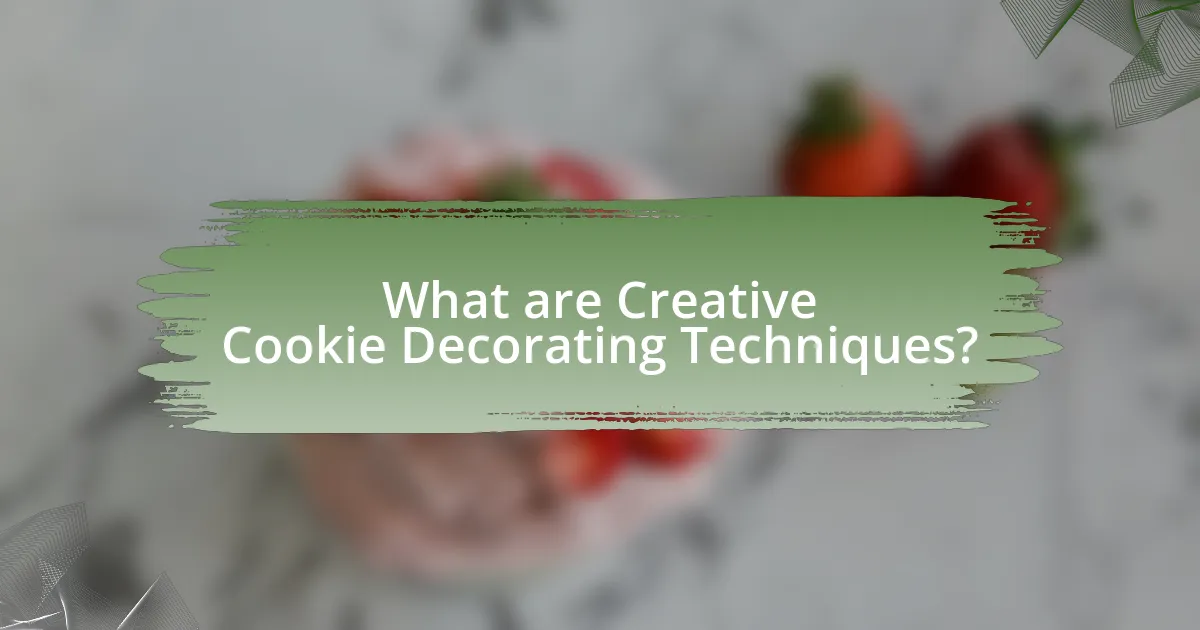
What are Creative Cookie Decorating Techniques?
Creative cookie decorating techniques include methods such as royal icing, fondant application, and airbrushing. Royal icing allows for intricate designs and is often used for detailed piping and flooding techniques, creating smooth surfaces for decoration. Fondant can be rolled out and shaped to cover cookies, providing a sleek finish and the ability to create 3D decorations. Airbrushing adds depth and color gradients, enhancing the visual appeal of cookies. These techniques are widely used in baking and confectionery, as evidenced by their popularity in professional baking competitions and social media platforms, where visually appealing cookies are showcased.
How can cookie decorating enhance special occasions?
Cookie decorating can enhance special occasions by adding a personalized and visually appealing element to celebrations. Custom-designed cookies can reflect themes, colors, and motifs specific to events such as birthdays, weddings, or holidays, making them memorable. For instance, a study published in the Journal of Culinary Science & Technology highlights that visually attractive food can increase enjoyment and satisfaction, thereby enhancing the overall experience of the occasion. Additionally, decorated cookies can serve as unique party favors, allowing guests to take home a piece of the celebration, further solidifying the event’s significance.
What types of events benefit from creative cookie decorating?
Creative cookie decorating benefits various events, including birthday parties, weddings, baby showers, corporate events, and holiday celebrations. These occasions often involve gatherings where personalized and visually appealing treats enhance the overall experience. For instance, at birthday parties, themed cookies can reflect the interests of the celebrant, while at weddings, custom cookies can serve as unique favors that align with the wedding theme. Additionally, during corporate events, branded cookies can promote company identity and engage clients. Holiday celebrations, such as Christmas or Halloween, also see a rise in cookie decorating as families and friends come together to create festive treats.
How does cookie decorating contribute to the overall theme of an occasion?
Cookie decorating enhances the overall theme of an occasion by providing visually appealing and thematic elements that align with the event’s purpose. For instance, cookies decorated with specific colors, shapes, and designs can reflect the holiday, celebration, or gathering, such as heart-shaped cookies for Valentine’s Day or snowflake designs for winter festivities. This visual alignment not only reinforces the theme but also creates a cohesive atmosphere, making the event more memorable for attendees. Studies in event planning indicate that cohesive themes can significantly enhance guest experience and satisfaction, demonstrating the importance of such decorative elements in event success.
What tools and materials are essential for cookie decorating?
Essential tools and materials for cookie decorating include royal icing, food coloring, piping bags, and various decorating tips. Royal icing serves as the primary medium for decorating, providing a smooth finish that hardens upon drying. Food coloring allows for customization of icing colors, enabling a wide range of designs. Piping bags are crucial for applying icing with precision, while different decorating tips create various patterns and textures. Additionally, cookie cutters, edible glitter, and sprinkles enhance the visual appeal of decorated cookies, making them suitable for any occasion.
Which types of icing are best for decorating cookies?
The best types of icing for decorating cookies are royal icing and fondant. Royal icing, made from egg whites and powdered sugar, dries hard and allows for intricate designs and detailed decorations, making it ideal for cookie decorating. Fondant, a sugar-based icing, provides a smooth finish and can be rolled out to cover cookies or shaped into decorations, offering versatility in presentation. Both types are widely used in professional baking and home baking due to their effectiveness in achieving visually appealing results.
What are the must-have tools for a beginner cookie decorator?
The must-have tools for a beginner cookie decorator include piping bags, various piping tips, a scribe tool, food coloring, and a rolling pin. Piping bags are essential for applying icing with precision, while different piping tips allow for various decorative effects. A scribe tool helps in smoothing out icing and creating designs, food coloring is necessary for tinting icing, and a rolling pin is crucial for rolling out cookie dough to an even thickness. These tools collectively enable beginners to create visually appealing and professionally decorated cookies.

What are some popular cookie decorating techniques?
Some popular cookie decorating techniques include royal icing, flooding, and using edible markers. Royal icing is a versatile medium made from egg whites and powdered sugar, allowing for intricate designs and detailed decorations. Flooding involves outlining a cookie with royal icing and then filling in the center with a thinner consistency of the same icing, creating a smooth surface. Edible markers are used for drawing directly on cookies, providing a quick and easy way to add designs or messages. These techniques are widely used in cookie decorating due to their effectiveness and the visual appeal they create.
How can royal icing be used in cookie decorating?
Royal icing can be used in cookie decorating to create intricate designs and smooth finishes on cookies. This versatile icing can be piped onto cookies to form detailed patterns, outlines, and decorations, allowing for customization in various themes and occasions. Additionally, royal icing dries hard, making it ideal for stacking cookies without smudging the designs. Its ability to be thinned with water enables techniques such as flooding, where a base layer is applied, followed by more detailed piping once the base has set.
What are the steps to achieve a smooth royal icing finish?
To achieve a smooth royal icing finish, first prepare the royal icing by mixing powdered sugar, meringue powder, and water until it reaches a thick, glossy consistency. Next, use a piping bag to outline the cookie with the icing, ensuring the edges are well-defined. After outlining, flood the center of the cookie with a thinner consistency of royal icing, allowing it to spread and fill the outlined area. To eliminate air bubbles and create a smooth surface, gently tap the cookie on the counter. Finally, let the icing dry completely, which can take several hours or overnight, to ensure a flawless finish.
How can royal icing be colored and flavored?
Royal icing can be colored using gel food coloring or liquid food coloring, which allows for vibrant hues without altering the icing’s consistency. To flavor royal icing, extracts such as vanilla, almond, or lemon can be added, typically at a ratio of one teaspoon per cup of icing, ensuring the flavor is present without compromising the icing’s texture. These methods are widely used in cookie decorating to enhance both the visual appeal and taste of the finished product.
What is the significance of fondant in cookie decorating?
Fondant is significant in cookie decorating because it provides a smooth, versatile surface that can be easily shaped and colored, allowing for intricate designs and professional-looking finishes. This pliability enables decorators to create detailed decorations, such as flowers and figures, that enhance the visual appeal of cookies. Additionally, fondant can be flavored, adding a unique taste dimension to the cookies while maintaining a polished appearance. Its widespread use in cake and cookie decorating is supported by its ability to hold shapes and withstand various environmental conditions, making it a preferred choice among bakers and decorators.
How do you apply fondant to cookies effectively?
To apply fondant to cookies effectively, first ensure the cookies are completely cooled and have a smooth surface. Roll out the fondant to about 1/8 inch thickness and use a cookie cutter to cut shapes that match the cookies. Lightly brush the cookie surface with a thin layer of corn syrup or water to help the fondant adhere. Carefully place the fondant cutout on the cookie, smoothing it down gently to eliminate air bubbles. This method is effective because the moisture from the corn syrup or water creates a strong bond between the fondant and the cookie, ensuring that the fondant stays in place.
What are the advantages of using fondant over icing?
Fondant offers several advantages over traditional icing, primarily in its versatility and aesthetic appeal. Fondant can be rolled out and draped over cakes or cookies, creating a smooth, polished finish that is difficult to achieve with icing. This smooth surface allows for intricate designs and decorations, making fondant ideal for elaborate cake designs and themed events. Additionally, fondant can be easily colored and shaped, enabling decorators to create 3D figures and detailed embellishments that enhance the visual presentation of baked goods. Furthermore, fondant has a longer shelf life compared to icing, which can dry out or become sticky, making it a more reliable choice for long-term display.
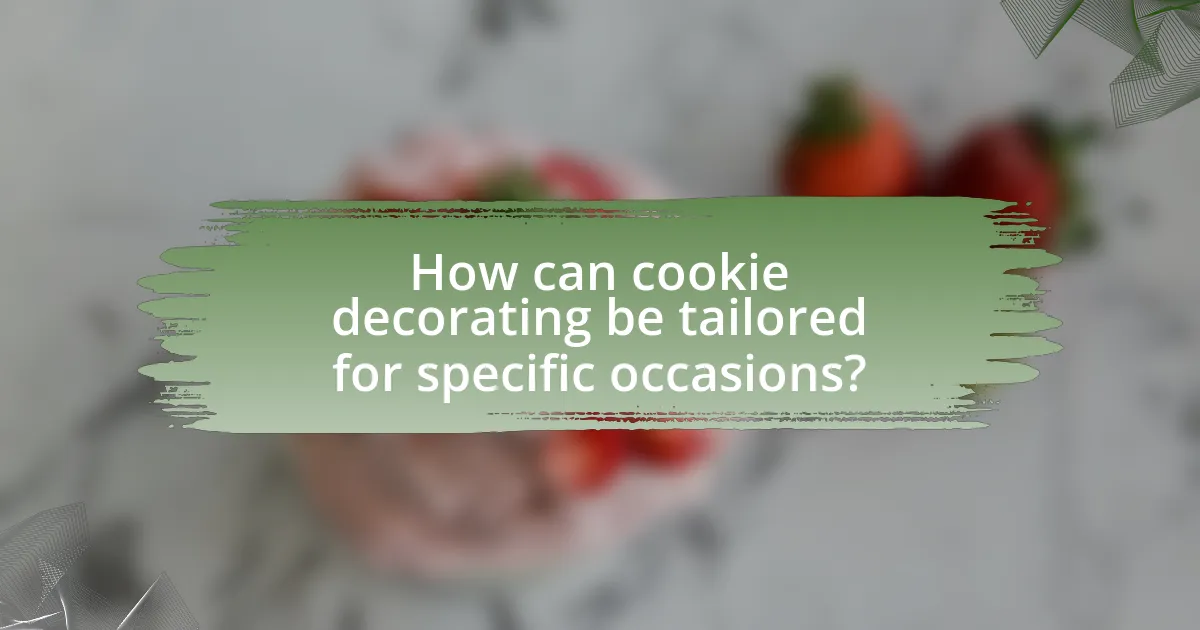
How can cookie decorating be tailored for specific occasions?
Cookie decorating can be tailored for specific occasions by using themed colors, shapes, and designs that reflect the event’s significance. For example, for birthdays, cookies can be shaped like cakes or balloons and decorated in vibrant colors, while holiday cookies can feature traditional symbols such as Christmas trees or Easter eggs. Additionally, incorporating personalized messages or names on cookies enhances their relevance to the occasion. This approach not only aligns with the event’s theme but also engages guests, making the cookies a memorable part of the celebration.
What techniques are best for holiday-themed cookie decorating?
The best techniques for holiday-themed cookie decorating include royal icing, fondant application, and the use of edible glitter. Royal icing allows for intricate designs and can be piped to create detailed decorations, making it ideal for festive patterns and designs. Fondant can be rolled out and shaped to cover cookies smoothly, providing a polished look and the ability to create 3D decorations. Edible glitter adds a festive sparkle, enhancing the visual appeal of cookies. These techniques are widely used in holiday baking, as they enable bakers to create visually stunning and themed treats that are popular during celebrations.
How can you incorporate seasonal colors and designs into your cookies?
To incorporate seasonal colors and designs into your cookies, use food coloring and themed decorations that reflect the specific season. For example, during autumn, utilize orange, brown, and yellow hues for icing and incorporate leaf or pumpkin shapes. In winter, opt for cool colors like blue and white, and use snowflake or Christmas tree designs. Research indicates that color psychology influences perception, making seasonal colors enhance the festive experience of baked goods. By aligning your cookie designs with seasonal themes, you create visually appealing treats that resonate with the occasion.
What are some unique ideas for Halloween cookie decorations?
Unique ideas for Halloween cookie decorations include using royal icing to create intricate designs such as spider webs, ghosts, and pumpkins. Additionally, incorporating edible glitter can add a spooky sparkle to cookies shaped like bats or witches. Another idea is to use fondant to mold 3D shapes like skulls or candy corn, enhancing the visual appeal. Sprinkles in Halloween-themed colors, such as orange, black, and purple, can also be used to create festive patterns. These techniques are popular among bakers for their ability to transform simple cookies into eye-catching treats that align with Halloween themes.
How can cookie decorating be adapted for birthdays and celebrations?
Cookie decorating can be adapted for birthdays and celebrations by customizing designs to reflect the theme of the event, such as using specific colors, shapes, and messages. For instance, birthday cookies can be shaped like balloons, cakes, or presents, and decorated with vibrant icing and edible glitter to enhance visual appeal. Additionally, incorporating personalized elements like the birthday person’s name or age on the cookies adds a unique touch. This approach aligns with the trend of personalized party favors, which studies show increase guest satisfaction and engagement during celebrations.
What are some popular birthday cookie designs?
Popular birthday cookie designs include themed shapes such as cakes, balloons, and presents. These designs often feature vibrant colors and intricate icing details to enhance their festive appeal. For instance, cookies shaped like birthday cakes can be decorated with layers of icing to mimic real cakes, while balloon-shaped cookies may use bright colors and patterns to create a celebratory look. Additionally, personalized cookies with names or age numbers are increasingly popular, allowing for customization that resonates with the birthday individual. These designs are widely favored for their visual impact and ability to convey the celebratory nature of birthdays.
How can personalized messages be added to cookies?
Personalized messages can be added to cookies by using edible ink pens or food-safe markers to write directly on the cookie surface. This technique allows for customization with names, dates, or special messages, enhancing the visual appeal and personal touch of the cookies. Edible ink pens are specifically designed for food use, ensuring safety and compliance with food regulations.
What are some tips for successful cookie decorating?
To achieve successful cookie decorating, ensure you use the right consistency for your icing, typically a flood consistency for filling and a thicker consistency for outlining. This allows for clean lines and prevents the icing from running off the edges. Additionally, using quality food coloring can enhance the vibrancy of your designs, while practicing piping techniques on parchment paper can improve your skills before decorating the actual cookies. Finally, allowing each layer of icing to dry completely before adding more details is crucial to prevent smudging and ensure a polished finish.
How can you troubleshoot common decorating mistakes?
To troubleshoot common decorating mistakes in cookie decorating, first identify the specific issue, such as uneven icing or color bleeding. For uneven icing, ensure the consistency of the icing is correct; it should be smooth and flow easily without being too runny. If color bleeding occurs, use a thicker icing for outlines and allow each layer to dry before adding additional colors. These methods are supported by expert advice from professional bakers, who emphasize the importance of icing consistency and drying times in achieving clean, professional-looking designs.
What best practices should you follow for a professional finish?
To achieve a professional finish in cookie decorating, ensure meticulous preparation and attention to detail. Start with a smooth, even base layer of icing, which can be achieved by using a flood technique that allows the icing to spread uniformly. Utilize high-quality ingredients, such as pure vanilla extract and gel food coloring, to enhance flavor and appearance. Additionally, allow adequate drying time between layers of icing to prevent smudging and maintain crisp edges. Employ piping techniques with a steady hand and consistent pressure to create clean lines and intricate designs. Finally, consider using edible glitter or luster dust for a polished look, as these elements can elevate the overall presentation.
